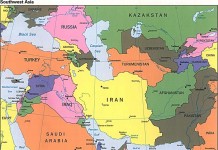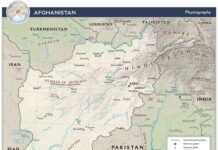Context
 As the reality of the Taliban Doha office settles, there is a sense of shock in some quarters. Nowhere is this sentiment more prevalent than in Afghanistan itself. The Karzai government has gone on an onslaught, with all guns blazing. One ponders that they should have seen this coming; after all, they claim to be involved in the process. Then there is Pakistan that has maintained a distance from what transpired in Doha, even while the Americans are giving them quite a bit of credit.
As the reality of the Taliban Doha office settles, there is a sense of shock in some quarters. Nowhere is this sentiment more prevalent than in Afghanistan itself. The Karzai government has gone on an onslaught, with all guns blazing. One ponders that they should have seen this coming; after all, they claim to be involved in the process. Then there is Pakistan that has maintained a distance from what transpired in Doha, even while the Americans are giving them quite a bit of credit.
But its just not Afghanistan, India and Russia are equally worried about what this change means.
They are interpreting the American willingness to tolerate Islamic militant groups once more as an ominous sign. Particularly, when events of Syria appear to back such a premise. John Kerry was seen negating any such perception during his recent visit to India, where he backed a stronger role for the country in Afghanistan.
Was this just perception management, or crossing of Pakistan’s red line regarding India’s military involvement in Afghanistan? In addition, by not visiting Pakistan, Kerry may have reinforced the hyphenation of Pakistan and India that came about with the notion of ‘AfPak’. The absence of any reaction from Pakistan suggests that some staging is taking place.
The back and forth regarding Taliban political office has been going on for a while now, and it was obvious that the camel would have to finally sit down, on which side, has also looked apparent for some time now. Then there was the on-going dilemma of who has the upper hand.
Analysis
Obama’s AfPak Policy
The American AfPak policy that came about after an extensive review in 2009 included a surge in troops with a controversial withdrawal timeline. From how things were reported at the time, it looked as President Obama was giving his generals and hardliners one more chance to prove their conviction, failing which, the other trigger, withdrawal, will kick-in. At the time, Obama was criticized for giving a timeline that was considered tantamount to telling the Taliban to dig in until 2014.
The role of Afghanistan and Pakistan, and the associated blame game, were also high on the agenda when these strategic calculations were being made. Reportedly, the key issues were the safe havens in FATA and the gambit of other religious extremists that reside in Pakistan. Was US going to target Al Qaeda only, or go after all of its other affiliates in the region. The answer to this question pretty much defines the rest of the equation.
There was also a realization that the role of Pakistan should not just be visualized from the lens of war against terror. The country is an important Islamic nuclear power that sits next to Iran, India, and China.
To deal with the challenge posed by Pakistan, US strategy premised on going after the head of the snake, the head honchos, using drones and Special Forces. The mop-up that took place pretty much decimated the AQ leadership, and to some extent, also the leadership of other extremist groups. Did all of this happen with or without the consent of Pakistan remains unclear.
When it comes to Afghanistan, there was the Karzai factor. US has run into adds with the Afghan president on a number of occasions, but a lack of an alternative has always came in the way.
Skillfully navigating the complex regional, tribal and ethnic landscape has been Karzai’s strongest ability. He has masterfully exploited the sensitivities of Pakistan’s relations with India and the US. The Afghanistan-India strategic deal is a case in point. When it comes to connecting with the common Afghans that have to face NATO forces every day, Karzai has consistently projected Pakistan as desiring to dominate the Afghans, and has raised the issue of civilian casualties when it comes to NATO.
What’s Next?
In the aftermath of the opening of Taliban office, the Afghan establishment now is pushing back. The narrative that is coming to the fore is that Afghanistan should be allowed to go ahead with the election of April 2014. These elections should decide the fate of Afghanistan, within the constitutional framework of the country, and not the Doha office. The fanfare with how the political office was opened, gave the impression that this office will actually decide the future dispensation of Afghanistan.
The sticking point that emerged from this hoopla was who represents the Afghans. If the Karzai government was all in control, and if NATO forces were succeeding, why was there a need for political reconciliation? And, if this is the stark reality, then what does this imply for who has the upper hand.
Obviously, Karzai who himself is a Pashtun, claims to represent all Afghans. But, if this is the case then who are the Afghan Taliban that have continued the fight for more than a decade now. According to some experts, the opening of Taliban office gives legitimacy to the fact that Pashtun are not represented in the Afghan government and that the fight there has become more of a Pashtun versus non-Pashtuns.
The Brooking Institute in Washington DC last week circulated an essay from renowned historian William Dalrymple: A Deadly Triangle: Afghanistan, Pakistan, and India. Darylmple also recently completed a book on Afghanistan, Return of a King. His essay is making circles around the influential corridors of Washington, which many believe portrays the Afghan conflict in the same ethnic canvass. Such a conclusion about the state of affairs there is what the Karzai government is trying to counter now.
The key sticking point is can the existing establishment and Afghan Taliban coexist in the future. Traditional balance of power is hard to undo and when it is done artificially, things turn out the way they have in Iraq and Syria. Ultimately, this is a question that Afghans would have to decide and no amount of blame game can absolve them of this responsibility. With the leadership of AQ mostly eliminated, the NATO/American mission, as it was defined, has been accomplished. However, if Afghans cannot decide, then others will try to influence.



